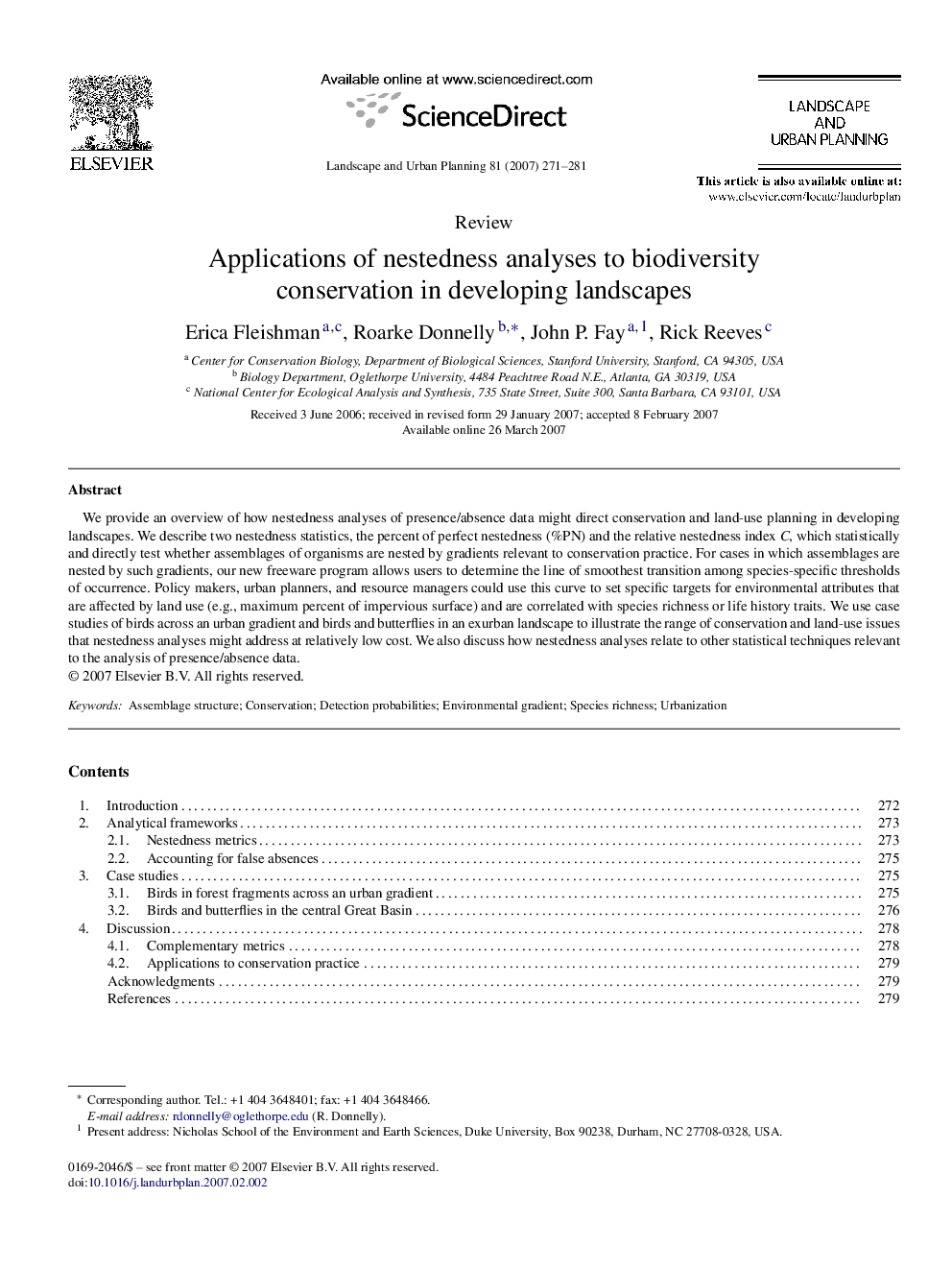| Article ID | Journal | Published Year | Pages | File Type |
|---|---|---|---|---|
| 1050491 | Landscape and Urban Planning | 2007 | 11 Pages |
We provide an overview of how nestedness analyses of presence/absence data might direct conservation and land-use planning in developing landscapes. We describe two nestedness statistics, the percent of perfect nestedness (%PN) and the relative nestedness index C, which statistically and directly test whether assemblages of organisms are nested by gradients relevant to conservation practice. For cases in which assemblages are nested by such gradients, our new freeware program allows users to determine the line of smoothest transition among species-specific thresholds of occurrence. Policy makers, urban planners, and resource managers could use this curve to set specific targets for environmental attributes that are affected by land use (e.g., maximum percent of impervious surface) and are correlated with species richness or life history traits. We use case studies of birds across an urban gradient and birds and butterflies in an exurban landscape to illustrate the range of conservation and land-use issues that nestedness analyses might address at relatively low cost. We also discuss how nestedness analyses relate to other statistical techniques relevant to the analysis of presence/absence data.
